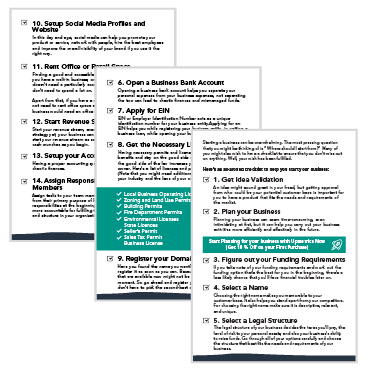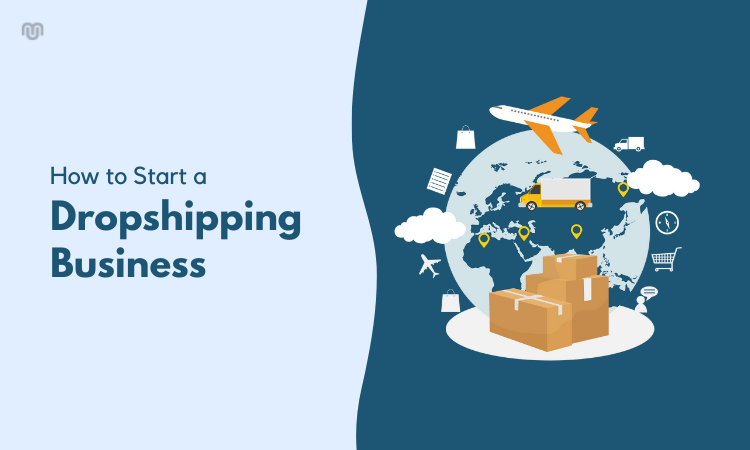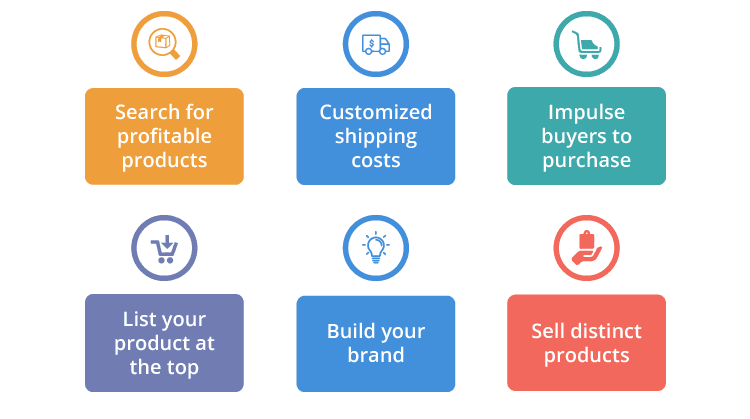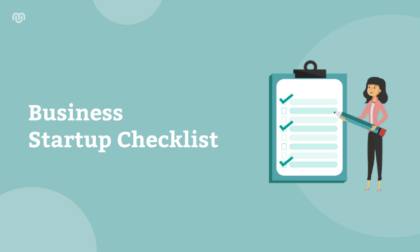Dropshipping is an innovative retail business format that doesn’t need you to stock up your inventory for sales. You don’t need office space or storage. You even don’t need to ship the product or deal with it physically at any stage. Sounds neat? If you’ve been looking to start a business of your own but are worried about a massive investment for stocking up goods, dropshipping could be your way to go.
With a low startup cost, minimum inventory management, wide scalability, business flexibility, and a broader opportunity for product offerings, a drop shipping business has many benefits. There are several pros and cons of a dropshipping business, which is why you need to plan several aspects in advance before starting a dropshipping business.
An Ideation Guide for a Dropshipping Startup Setup
1. Select a Domain
To start a dropshipping business, the first step is to choose your niche. The success of your business depends upon how well you perform in the niche that you select. Some of these criteria and aspects can help in determining your niche:
- Search for profitable products: For a successful Dropshipping Business, it is essential to focus mainly on customer retention and the kind of products that you can sell to them effectively. Hence, search for a niche with products with higher pricing and sales rates.
- Customized shipping cost: Make sure you keep shipping charges minimum. Although suppliers or manufacturers might be selling products at a higher cost, try to display a minimal shipping cost to your customers. It attracts customers and increases sales.
- Impulse buyers to purchase: You can increase the conversion rate only when your products appeal to the impulse of the buyers. The chances of visitors returning back to your product page are slim. Thus, try to convert the sale in the first impactful shot.
- List your product at the top: Visitors must notice your product. For this, you can use Google’s Keyword Planner or any other keyword research tool to rank them as high as possible.
- Build your brand: Think of building your brand even if you plan to sell products from a variety of brands. Create your store brand, and collaborate with a reliable source to ship your products on an order-only basis.
- Sell distinct products: Select products that are unique and unavailable commonly in the market. This will make the customers come to your store rather than the standard shopping sites that they are accustomed to.
2. Make Your Business Plan
To keep track of all the specifics of your dropshipping business, you also need a structured business plan to compartmentalize different aspects. A business plan gives you a blueprint to categorize roles, delegate departments, and plan out alternatives for different updates within your business.
Your business plan will also act as the official piece of documentation for loan approval processes and obtaining your business license and permits. Your business plan can have theoretical, and analytical metrics as well as target action plans and lists. Check out the ultimate dropshipping business plan template to get yours started.
3. Analyze Your Competition
Various Dropshipping business models have made their space in an expanding market. So, it is fair to assume that you will face a lot of competition in this business model. There are plenty of big retailers like Amazon and Walmart who are readily your competitors. Unless you choose a really unique niche, you will be competing with these giant retailers.
The biggest mistake that a fresher makes is to approach products without considering the competition. Potential drop shippers can cover up the competition by setting their offerings a notch up. Hence, the demand for your business increases only if your offerings and brand identity stand apart from the competition.
Try analyzing your niche competitors – what are they trying to sell? Google your niche to check the top suggestions. These responses give you a better perspective to gauge your competition at certain locations. You can also use dedicated tools for researching more about your competitors’ products, advertising strategies, and target marketing audience, and even get a list of peripheral competitors handy. Eventually, analyzing this data will give you a better insight into the niche you want to go for and a strategy for setting your store apart from the rest.
4. Decide on a Source or Supplier
If you’re going to start dropshipping, you’ll need to source your goods from somewhere. Why this step is even more important for dropshipping because you aren’t going to have a secure inventory. Your source or supplier will also be responsible for shipping your products directly. A lot of drop shippers rely on wholesale websites to source their products, but some have also been greatly successful with other independent suppliers.
To identify a valid supplier, you need to consider a lot of factors. The possibilities of affordable but non-reliable suppliers can be the obstacle that your dropshipping business doesn’t need! You must ensure that the suppliers grant 100% assurity of their production competence. Try to educate yourself about the possibilities of fraud, non-accurate product representation on websites, etc., before you decide where you want to source from.
5. Create Your Store
Next, you need your exclusive store for selling the products that you are going to the source. Start creating your Dropshipping store using popular e-commerce services providers like Shopify or woocommerce. For building a store, you don’t need much time. You do need some time to decide on what your store and brand aesthetic will be. Without any prior technical experience, you can create a store easily with template-based tools. To be frank, you don’t even need to hire anyone for website development for dropshipping. At least, when you’re starting out with a low budget, you can set up pretty easily on your own.
You can use a variety of plug-ins to design your store and readily integrate it with features. First, search for your desired domain name, and check if it’s available. Once you have created a store interface, you can start fine-tuning your store’s look by adding themes and designing it to fit your vision. Once the front end is ready, work on seamless integration with the backend and database security. Prompt dropshipping store management principles can help you manage your store effectively.
6. Build a Customer Retention Plan
Selecting your niche and building an e-commerce store is not enough for a successful Dropshipping Business. A proper customer acquisition plan is necessary. Customers can only visit your store if you direct them there through active marketing. You can either approach marketing agencies or hire marketing professionals to market your products. Various marketing strategies can be put in place, but Instagram and Facebook marketing are hotspots for dropshipping. Facebook is one of the biggest marketplaces.
Selecting an effective Facebook marketing plan from the beginning will allow you to streamline your revenue generation plan. Depending upon your niche, you can hire a Digital Marketing Agency or Digital Marketer to channel SEO, SEM, and other social media marketing efforts for your business. For drop shipping, your online presence and active remarketing tactics are of supreme relevance. If you’re looking for one avenue to invest in your business, robust online marketing and management are on top of the list.
7. Tracking Metrics and Data Analytics
The results for your dropshipping venture can differ greatly depending upon your niche of choice and even your product listing, for that matter. One effective way to keep fine-tuning your strategies is by analyzing every step and tracking the records to check for metrics that define the growth of the business.
Tracking metrics and analyzing data for your successful purchases can help to formulate a remarketing strategy that can trigger a boost for your business. When you receive an update through any customer acquisition strategy, you can find the customer details and the origin of the purchase. With this, you can understand when to optimize the strategies for getting better results.
Summing Up
Thus, there is definitely more to a drop shipping business than one would think. How well your store functions will greatly depend on the streamlined workflow between the supply and customer chains. Analyzing metrics, market trends, and detailed plans for retaining your customer base is also equally relevant. Try out different organizational business plan samples at Upmetrics to sort out your plans before you officially kick-start your dropshipping business venture!











